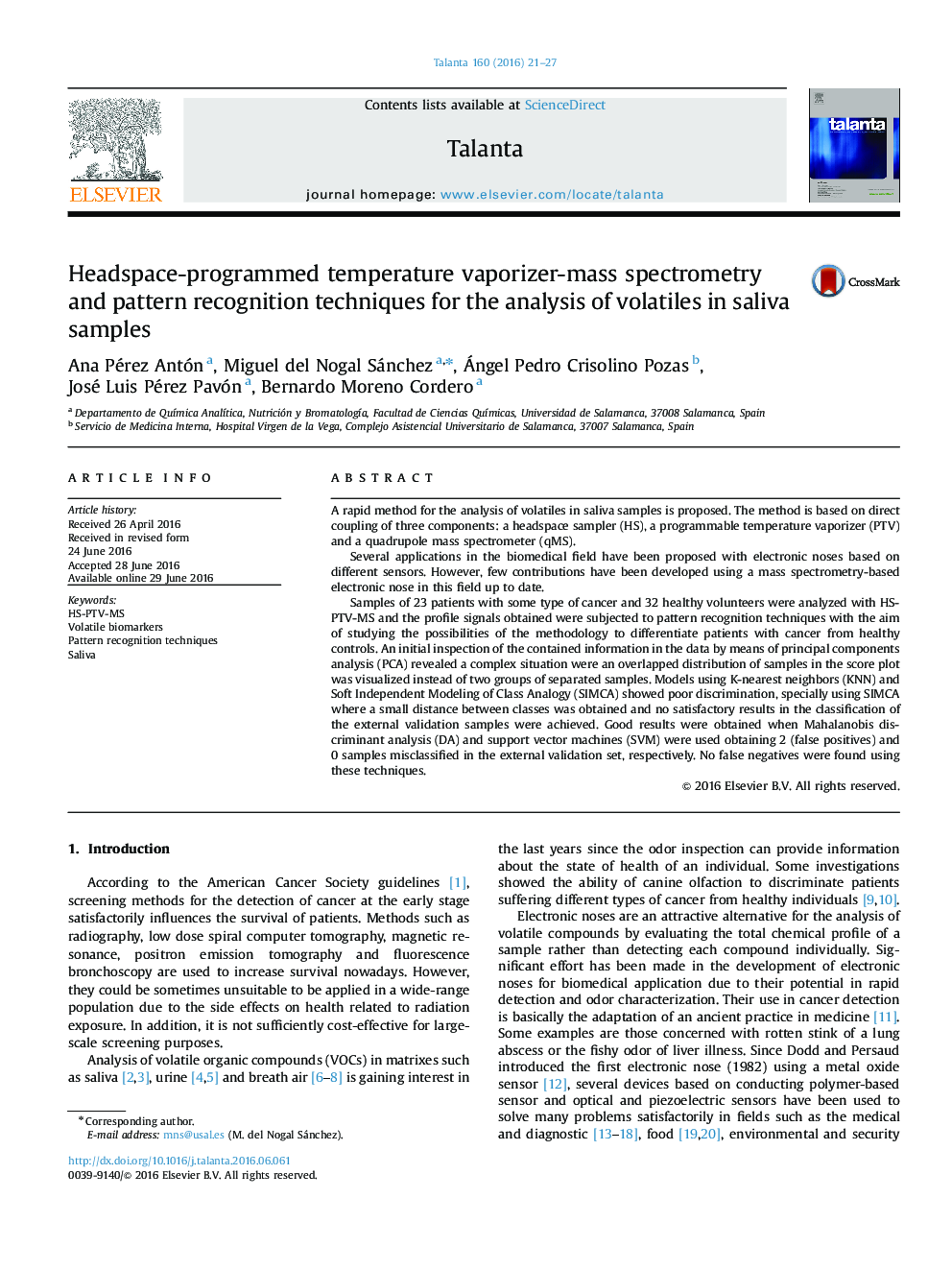| Article ID | Journal | Published Year | Pages | File Type |
|---|---|---|---|---|
| 1243227 | Talanta | 2016 | 7 Pages |
•A rapid method for the analysis of volatiles in saliva samples is proposed.•The method is based on direct coupling of three components: HS-PTV-MS.•The profile signals obtained were subjected to different pattern recognition techniques.•No false negatives were obtained for quadratic discriminant analysis and support vector machines.
A rapid method for the analysis of volatiles in saliva samples is proposed. The method is based on direct coupling of three components: a headspace sampler (HS), a programmable temperature vaporizer (PTV) and a quadrupole mass spectrometer (qMS).Several applications in the biomedical field have been proposed with electronic noses based on different sensors. However, few contributions have been developed using a mass spectrometry-based electronic nose in this field up to date.Samples of 23 patients with some type of cancer and 32 healthy volunteers were analyzed with HS-PTV-MS and the profile signals obtained were subjected to pattern recognition techniques with the aim of studying the possibilities of the methodology to differentiate patients with cancer from healthy controls. An initial inspection of the contained information in the data by means of principal components analysis (PCA) revealed a complex situation were an overlapped distribution of samples in the score plot was visualized instead of two groups of separated samples. Models using K-nearest neighbors (KNN) and Soft Independent Modeling of Class Analogy (SIMCA) showed poor discrimination, specially using SIMCA where a small distance between classes was obtained and no satisfactory results in the classification of the external validation samples were achieved. Good results were obtained when Mahalanobis discriminant analysis (DA) and support vector machines (SVM) were used obtaining 2 (false positives) and 0 samples misclassified in the external validation set, respectively. No false negatives were found using these techniques.
Graphical abstractFigure optionsDownload full-size imageDownload as PowerPoint slide
